Food Hall Frenzy
Inside Santa Barbara’s Spin on the International Trend of Shared Food & Drink Developments
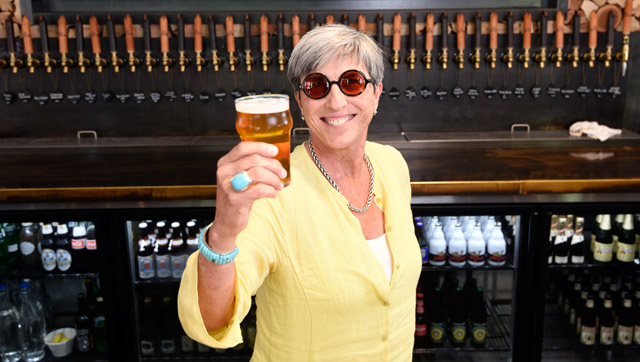
About a decade ago, I stepped foot in San Francisco’s Ferry Building, and the epicurean corner of my mind was blown. Oysters on the half-shell here; fresh-baked sourdough there; casual cafés and burger joints right in front of me; sit-down Asian noodle restaurants and Mediterranean bistros across the way; wine, beer, juice, and coffee everywhere. I thought about moving in.
Opened in 2003, this food-and-drink marketplace breathed fire into what would become the country’s hottest culinary trend: the coast-to-coast development of what are collectively being called “food halls,” loosely defined as places where multiple establishments offer a wide variety of food and/or beverage experiences under the same roof.
It’s not a new concept. Public markets with food-serving stalls are prevalent in the Old World, and here in America, Philadelphia’s still-kicking Reading Terminal Market opened in 1892, Seattle’s Pike Place in 1907, and Los Angeles’ Grand Central Market paired restaurants with grocery offerings as far back as 1922.
Packaged goods and produce still fly off the shelves of some American food halls, but today’s version — often built by urban-renewal-minded developers repurposing outdated, industrial warehouses—is dominated by food-and-drink-serving establishments. They’re kind of like the food courts of suburban malls, yet focused on artisanal, boutique-sized, entrepreneurial purveyors rather than national fast food chains. And the quality bites and beverages are just part of the equation: These modern food halls, often designed with sleek urban touches of wood, metal, and stone, place great emphasis on the communal visitor experience, making them a place to see and be seen.
Santa Barbara is home to four such developments: the Santa Barbara Public Market on West Victoria Street at Chapala, which opened to much aplomb in 2014 with more than a dozen vendors and recently retooled its offerings; The Mill at East Haley and Laguna streets, which opened in 2015 and features a barbecue restaurant, working winery, and working brewery; The Waterline, which opened on lower Santa Barbara Street in the Funk Zone in May 2016 with its first two tenants and expects to unveil the next three in a month; and The Lark complex, which is managed by Acme Hospitality and, since opening in 2013, has become the Funk Zone’s de facto headquarters, with restaurants, a wine bar, a wine tasting room, and a recently opened bakery. The latter is also adjacent to a separately managed but similarly minded strip facing Yanonali Street that’s home to a brewery, distillery, and two wine tasting rooms.
S.B. Public Market
38 W. Victoria St.; 770-7702; sbpublicmarket.com
Urban Developments’ Marge Cafarelli developed and owns the property; she is also a co-owner of many individual businesses inside and leases out other spaces to tenants.
Square footage: 15,200, with 4,527 more of storage
Number of businesses: 11 operating; 3 vacancies
On-site parking spaces: 42
Occupancy: 400
Date opened: April 12, 2014
Estimated employees: Approximately 180-200
Development history: Submitted April 2009, broke ground June 2012, opened in April 2014
General hours (individual tenants vary): 7:30 a.m.-11 p.m.
All are unique in structure, both physically and financially, and each combines an eclectic array of vendors. But they were created under that same artisanal-food-and-drink-in-a-repurposed-space ethos that’s pushing the national trend, and have all faced similar challenges in getting their projects through the City of Santa Barbara’s permitting process, where concerns about adequate parking largely rule the roost.
Passion and Permits
Sherry Villanueva began treading down this food-hall-esque path in 2011 when she started envisioning The Lark and its surrounding establishments, which redeveloped what was once a fish-processing warehouse. “Reuse of these large industrial spaces lends itself to multiple concepts,” she said. “Any one of these independent ventures can’t carry the burden of a large space on its own, so you need partner tenants to make it work.” Plus, customers like it. “We want our guests to feel that sense of discovery,” she said of visitors moving, for instance, from lunch at the Lucky Penny to sips at the Wine Collective. “It’s like a little treasure hunt.”
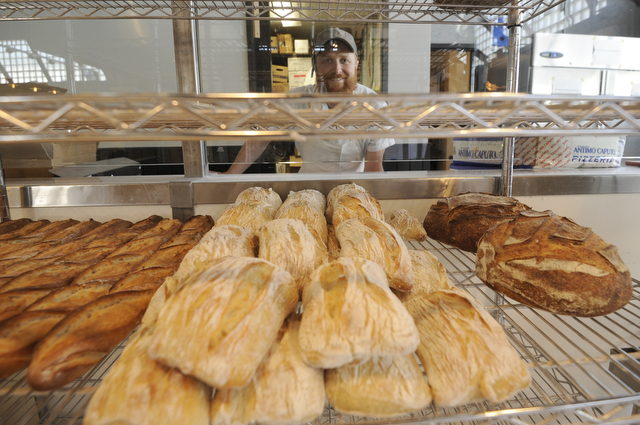
The Lark Complex
131 Anacapa St.; www.acmehospitality.com
Acme Hospitality, owned by Sherry Villanueva, Brian Kelly, and other investors, developed the property but are tenants; the group owns each establishment on-site, but every entity is treated as a separate business.
Square footage: 10,000
Number of businesses: 6 (The Lark, Lucky Penny, Les Marchands, Santa Barbara Wine Collective, Helena Avenue Bakery, Notary Public Wine)
On-site parking spaces: 17 plus rental of private lots for valet service; 30 bicycle spots
Occupancy: Varies by business
Date opened: 3 businesses opened in August 2013; 2 in November 2015, and one July 2016
Estimated employees: More than 100, mostly part-time
Development history: Ranged 9-18 months to get permits; 6 months to 2 or more years after that for construction
John Goodman and Barrett Reed, the young developers behind The Waterline, see a strategic advantage to having multiple tenants rather than just one. “When there are options and it all works together, the odds of people coming to the property and enjoying it are higher,” said Goodman.
For The Mill, owners/developers Darrell and Kirsten Becker did “vast” research to determine what to do with the property. They considered a food truck court, entertained the idea of a single tenant, and nearly dedicated the site to multiple manufacturers but kept brainstorming. “How do we bring people back down to Haley?” thought the Beckers. “How do we enliven this corner?” The result was a mix of beverage production by Potek Winery and Third Window Brewing paired with Wildwood Kitchen barbecue and their own interior design showroom. More openings are on the way soon, including The Mill Annex across the street.
Despite their community-minded decision, the Beckers — and most every other business owner interviewed for this article — quickly ran into hurdles rather than applause at City Hall. “They did not have open arms. They told us all the things we couldn’t do,” said Darrell Becker. “They should give you a playbook and say, ‘Here is what you need to do.’ This was not that. It was a lot of work.” They spent more than a year on parking schemes alone.
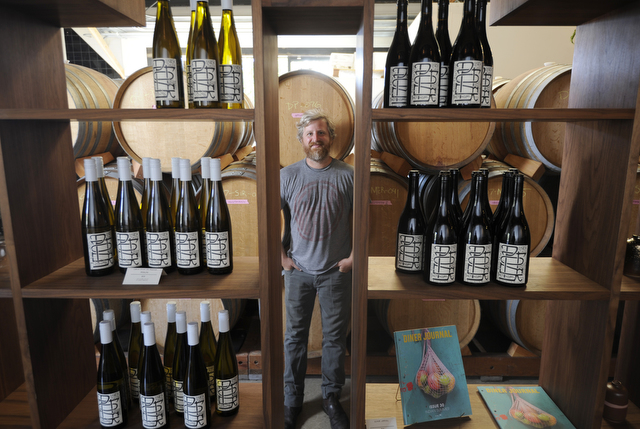
The Waterline guys float in a similar boat, most recently having to remodel the second phase — and delay its opening — because of the city’s parking concerns. Due to the traffic and parking pressure caused by the Funk Zone’s popularity, Goodman and Reed think that the city is tightening its interpretation of parking rules in the bustling waterfront neighborhood. “They narrowed their scope,” said Goodman, who says these last-minute delays cost his tenants lots of money.
City Councilmember Randy Rowse, himself a restaurateur, confirms those suspicions. “In The Funk Zone, we have a tiger by the tail,” he said. “We let the genie out of the bottle on that one because it moved so much more explosively than we could have guessed. Now we have a problem with parking and circulation down there.”
He’s tired of the argument that “millennials don’t drive cars,” a common refrain by those who want parking rules to be relaxed. “If I have to hear that one more time, I might just go off on something,” said Rowse, who is “fearful” of approving projects without proper parking. “Is there nobody on this planet besides millennials?”
At first glance, the city’s parking rules are simple: They mandate a certain number of parking spots be included on-site based on a project’s square footage. But different zonings allow for different formulas — a “working” brewery needs less spaces than a beer bar, for instance — and restaurants can also be calculated based on seating rather than square footage. Throw in historical credits for on-street parking, which were allocated nearly 40 years ago based on a building’s then-use, and the downtown core’s “zone of benefit” — where businesses pay fees to fund the parking garages used by their customers — and the permitting grows complex.
“Parking is one of the highest concerns for Santa Barbarans,” said City Transportation Planner Rob Dayton. “It’s more of a tool to regulate what the community needs. Sometimes that’s more on the parking end, and sometimes it’s more on the economic end.” For instance, the Funk Zone was born out of the Great Recession, so the city leaned toward development over parking, and the recent shift to mandate less parking for rental units quickly spurred the building of more apartments. Now, with a more thriving economy, the city wants to get the parking right.
That’s been especially challenging for The Lark, The Waterline, and The Mill, all outside of downtown’s zone of benefit. “All three of them proposed to take old industrial buildings and convert them from uses with very low parking requirements to uses with very high parking requirements,” said Senior Planner Danny Kato. “If they need to provide 35 parking spaces, but they only provide nine, that means the demand for 26 parking spaces are going to be out on the street. That can impact the neighbors who used to have tons of parking available on the street. Their customers could easily come in, but now it’s more difficult to find a place to park.”
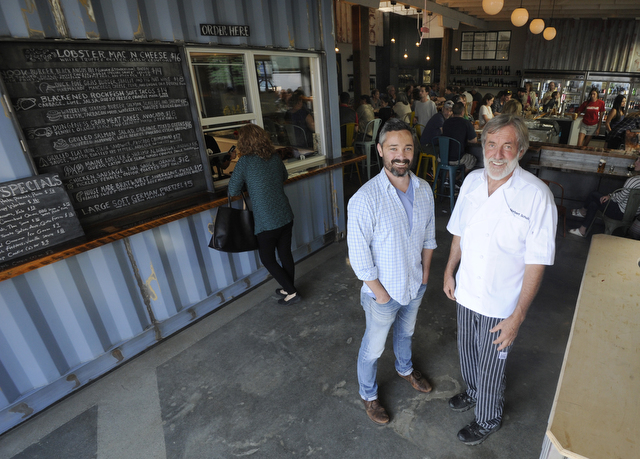
The Waterline
116 and 120 Santa Barbara St.; 845-1482; waterlinesb.com
Miramar Group’s John Goodman and Barrett Reed developed and own the property; they have partial ownership of one business inside, but the others are tenants.
Square footage: About 10,000
Number of businesses: 6, but about 12 individual artisans at the Guilded Table
On-site parking spaces: 26
Occupancy: Waiting for fire department estimate
Date Opened: May 13, 2016 (phase one: The Nook and Lama Dog); around October 1 (phase two: Topa Topa, Blair Fox Cellars, Fox Wine Co., The Guilded Table)
Estimated employees: About 60
Development history: About 21 months from start to finish
General hours: 11 a.m.-midnight
Though it took time, all three properties achieved the required parking, and the Beckers even purchased a property across the street from The Mill, where they will put 17 more spots. But the process has left them feeling as if the city doesn’t support creative business or do much big-picture thinking, preferring instead to focus on granular issues. Many also wonder why there isn’t a business development office that helps ease the process, like those that exist in other municipalities. “The city [staffers] are trying their hardest to enforce zoning and building restrictions that have been placed on them,” said Villanueva. “Unfortunately, those rules are broken, so they’re having to enforce rules that don’t make any sense. I have a lot of empathy for them.”
The city is hearing at least some of these concerns, and it is trying to streamline the parking rules as part of the New Zoning Ordinance process, which will be discussed at an August 29 hearing. Specifically, Kato and his colleagues want to remove the per-seat rules for restaurant parking and base it strictly on square footage, which is easier to calculate. “You can’t bargain over that,” said Kato. “That will make things go a lot faster.”
Additionally, the Funk Zone will be affected by the city’s ongoing update to its Local Coastal Plan. Both landlords and tenants would love for the city to build its own parking lot down there, but that’s unlikely given the expense. So Goodman, Reed, and their neighbors have hired consultant Suzanne Elledge to determine what it would take to create a zone of benefit in that area and possibly a privately funded lot. “With all of the changes down here, the need for parking solutions, and the Coastal Plan being rewritten, we believe the parking standards will change,” said Reed.
Despite the gripes, all of the folks spoken to for this article do appreciate the city’s role and don’t want to be seen as, in Darrell Becker’s words, “bellyaching.” Explained Goodman, “They are just trying to make sure development is sustainable and does not affect neighbors too dramatically. We understand that.” He even admits that the rules may make their business better. “Every problem forces us to be more creative and leads to what, ultimately, is probably a better solution,” said Goodman, who believes the arduous process protects the town’s authenticity. Added Reed, “You really have to be good at navigating the city politics and process. That creates barriers to entry that are unique to Santa Barbara.”
Collaboration and Evolution
Approval doesn’t guarantee immediate success, especially for a concept new to town, which Public Market developer Marge Cafarelli learned soon after opening in April 2014. “This was big for Santa Barbara,” she said. “It was like a museum. People walked around like they were afraid to touch anything.”
A number of her original tenants did not succeed — one even sued her — but some, such as Empty Bowl Gourmet Noodle Bar and Rori’s Artisanal Creamery, have thrived. Cafarelli recently unveiled her 2.0 version of the market — see page 25 for more on that — and realizes that success in this shared-space game means continual evolution. “We need to sharpen our edges in every business,” she said. “It’s the hardest thing I’ve ever done.”
Finding the right mix of tenants is critical for each of the properties, and that often means accepting overlap. Acme’s Les Marchands Wine Bar & Merchant is right next door to its S.B. Wine Collective, for instance, and Topa Topa Brewing Co. and Blair Fox Cellars are about to open in The Waterline, which also has Lama Dog, a beer and wine bar. But the owners believe the communal nature will trump any cutthroat competition and that there is enough differentiation to entertain customers.
Over at The Mill, competition and collaboration will hopefully work hand in hand, as Third Window Brewing and Potek Winery can share space and equipment when necessary. “That’s our biggest challenge: How do we all coexist and thrive and have different offerings that are unique?” explained Dave Potter, Potek Winery’s owner. “I don’t think we’ve hit our stride yet. We’re still trying to find our groove a little bit.”
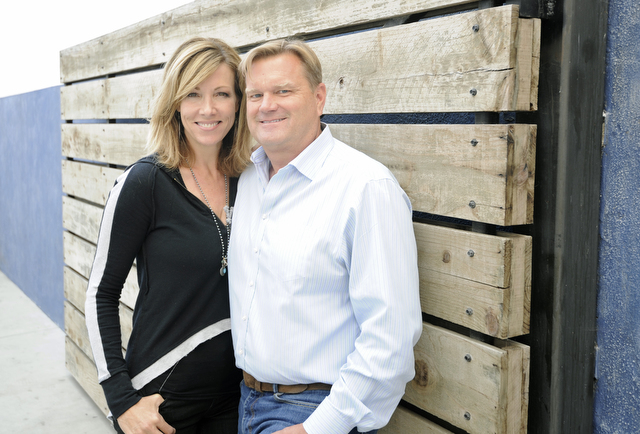
The Mill
406-416 E. Haley St.; themillsb.com
Becker Studios’ Darrell and Kirsten Becker developed and own the property; they own a showroom on-site but lease the other spaces to tenants.
Square footage: 23,356 gross (includes Mill Annex, under development across street)
On-site parking spaces (including Annex): 30, plus 9 bicycle spaces
Number of businesses: 13, plus 2 residential units
Employees: 87 full- and part-time
Development history: Started July 2013; permit issued October 2014; individual businesses varied
General hours: 8 a.m.-10 p.m.
But visit any of these properties in the late afternoon or on the weekend, and you’ll see that success is knocking loudly on their shared doors. The crowds are coming, eating, and imbibing with glee, with families, older folks, and, yes, plenty of millennials mingling together.
“This is really about the urbanization of our town — we’re becoming more like a real city that has room for these entrepreneurs that are more independent, small, and creative,” said Villanueva. “We’re connecting with foods that are handmade and locally sourced and sustainably farmed and all those things people are resonating with. We built this thing to have a place for local people to go that was fun and different and very in tune with what the market was looking for. I believe we are successful because the locals are behind it.”
• Bakery by the Beach: Helena Avenue Bakery Opens in the Funk Zone



